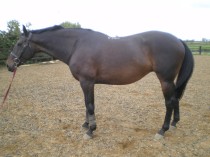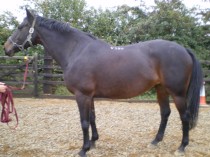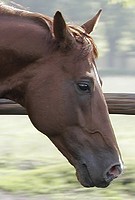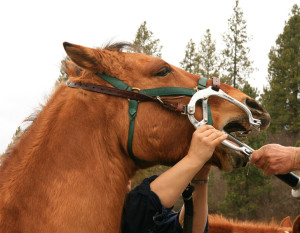My name is Jean Whitebread, Equine CranioSacral (ECS) Practitioner
ECS is a powerful, though gentle, mainly hands on healing practice
which is highly effective in the treatment of many acute and chronic injuries and conditions;
including behavioural and psychological problems.
Something being wrong, will cause a compensatory imbalance elsewhere.
Sadly, this often eventually leads to behavioural issues, and the horse being unfairly labelled.
Just some examples of where ECS can be used with success are in the treatment of:
HEAD SHAKING - CRIBBING - BACK AND JOINT PROBLEMS - BUCKING - COLIC - LAMENESS - HEAD INJURIES AND TRAUMAS - HEADACHES -
FEELING FLAT IN WORK - HEAD SHYNESS and SPOOKINESS -
TMD and IMBALANCES OF THE TMJ - - DIFFICULTY WITH TRANSITIONS - STUMBLING and TRIPPING - RESPIRATORY PROBLEMS -
FOLLOWING A PULLBACK WHEN TIED UP - POSTOPERATIVE RECOVERY -
Here are two recent before and after photos following just three sessions of ECS
over a three week period; showing Charlie, an 11 year old bay mare.
She had been unable to use herself correctly and was finding it difficult to work on the right rein, and was also very stiff in her back and neck; feeling cold backed when first mounted.
The before picture shows her being croup high and, not putting weight on to the off fore, also the forelegs are behind the shoulders.
In the after picture there is now an overall roundness to Charlie's outline, with her weight more evenly distributed - ribs fuller, with the forelegs more under the shoulders; and when being worked Charlie is now much more forward going on both reins, and she is also quite happy to stand still when mounted, and then walk on quietly when asked.
A few words from Charlie's owner Diane:
"Over the past few years we have all been aware of Alternative Therapies,
and most of us have opened our eyes.
How lucky is the horse who has an owner who is prepared to do this and ask for help.........
Continued > (and what other owners say) >
If there were any one single reason to use ECS - It would have to be after Dental work
with Maureen Rogers of Equine CranioSacral Workshops; including how ECS is working together with Equine Dentistry around the world. (Interviewed by Natural Horse Talk.com) Takes a few seconds to load
ECS and Equine Dentistry.mp3
MP3 audio file [1.1 MB]
Could your horse be carrying a burden?
That does not mean the rider!
Horses and Ponies are similar to humans; in that - they can store for years, buried deep within, the effects of past traumas, injuries, and bad memories; which should have been processed and either released, or integrated at the time, but were instead 'shelved' whilst the initial recovery took place.
After time these can become, and remain locked in; thereby preventing the horse from becoming free again and moving on.
Just another one of the many benefits of Equine CranioSacral work
is that it can reconnect the horse with it's own natural process of allowing the gentle unwinding and release of all that needs to go ... Relief !
Dentistry is a very important and necessary component of equine health, and should be regularly carried out by a qualified professional.
The Speculum (as shown) together with hand tools and sometimes power tools, are all required for dental procedures to be carried out as efficiently and safely as possible.
However, the horse's reactions to having the mouth held open in such an unnatural position (especially when under sedation), and also the actual work itself can lead to unhealthy pressures being put onto the bones of the skull and muscles of the TMJ; with enevitable consequences - such as compensatory patterns in mastication (chewing) - leading on to many other issues,
and even sometimes the need for more Dentistry.
CranioSacral work should always be performed after Dentistry to restore balance to the Muscles and Bones of the Skull








